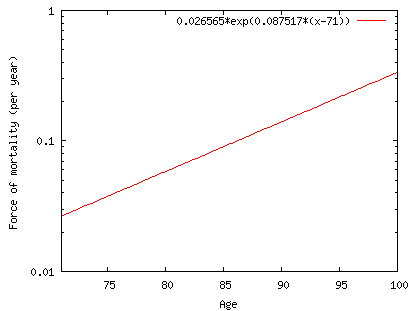
Estimation of the force of mortality independently of the initial health status using IMaCh
May 2004
Estimating mortality from the American LSOA surveys or from the French HID survey or from many recent cross-longitudinal surveys in various countries is neither easy nor accurate with classical demographical tools. Even if dates of death are checked with data from vital statistics and are of good quality the samples are often too small to be divided into subgroups. Also it is mandatory to estimate the mortality of subgroups or even of the whole sample if it suspected of biases in comparison with national mortality estimates.Using IMaCh (0.96d) we are able to estimate status based age specific forces of mortality and to derive global mortality by weighting them according to age-specific cross-sectional prevalences but here we are interested in estimating mortality directly i.e. without specifying any health status. This is obviously a simple problem but which is not so easy to solve because human mortality varies exponentially with age and age must be controlled accurately.We adapted a special program previously used to estimate mortality from centenarians surveys to implement a survival model which takes into account the exact duration between the first interview and the death if the person died before the last interview or the exact duration between the first and the last interview if the person is still alive.We included this program as a new feature of the IMaCh program version 0.97.
Mathematical modelisation of the age-specific mortality
The force of mortality is parametrized as a Gompertz fonction mu(x)=a exp(b*x) where x is age and a and b are the parameters. The model implemented in IMaCh is detailed in the pdf file docmortweb.pdf
The parameter file should be the same as the maximisation. The estimation of the global mortality is obtain when mle= -3. You can also choose the waves (firstpass and lastpass), number of observation (lastobs) and to add weights (weights).
Example of parameter file : mortparam.imach
When the run is finished, the user should enter the caracter 'e' to get the results in a htm file. This file contains the two parameters with confidence interval and a graph of the age-specific mortality obtained with the estimated parameters.
Example of output file : mortparam-mort.htm.
mu(age) =0.026565*exp(0.087517*(age-71))
